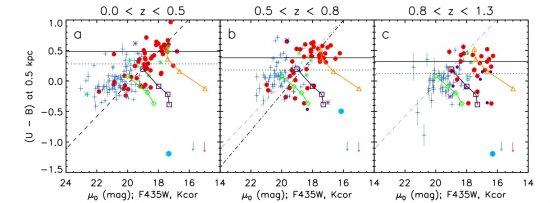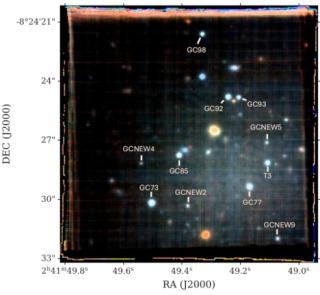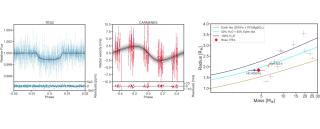The ideas on the formation history of disk galaxy bulges can beconfronted with direct observations of high redshift bulge precursors. Of vital importance is the search for strong episodes of star formation in the nuclei of the galaxies. Those episodes can result from secular processes that drive material from the outer regions inward, related to the phenomenon of the pseudobulges in the local Universe. Alternatively, they can be a consequence of rejuvenation procesess of old and red classical bulges formed at high redshifts. It is possible to distinguish between both types of bulges using a central surface density criteria: a classical rejuvenated bulge should have a higher surface density than a forming/growing bulge within its disk.
In this work, we analyse a bulge sample in the range 0 < z < 1.3. The aim is to study the nature of bulges with blue colors, typical of star formation populations, using a criteria based on the relation between the color and the central surface density. We find that until z~0.8, higher surface density bulges have also redder colors, which indicates that they were formed at early epochs. Blue bulges have all lower surface densities.
The main result of this analysis is the finding of an important phase of bulge growing at z~1, where a meaningful fraction of galaxies show high nuclear surface densities and blue colors that correspond, probably, to strong episodes of star formation conf
Advertised on
References
(2009) ApJ 694L, 69D.



